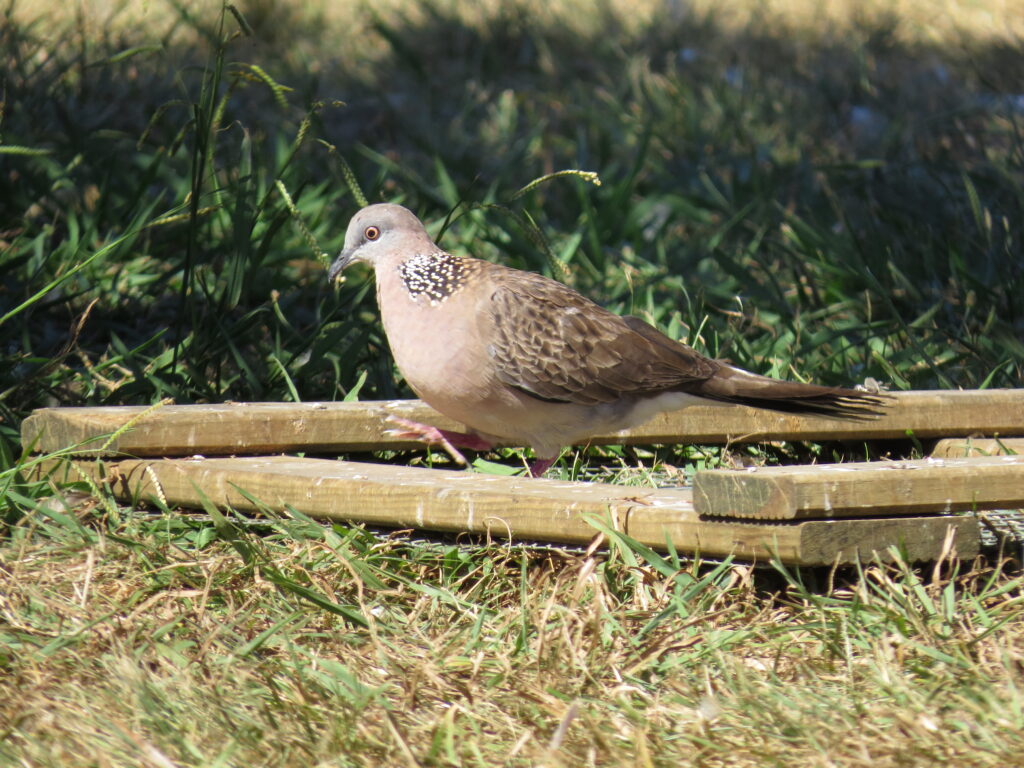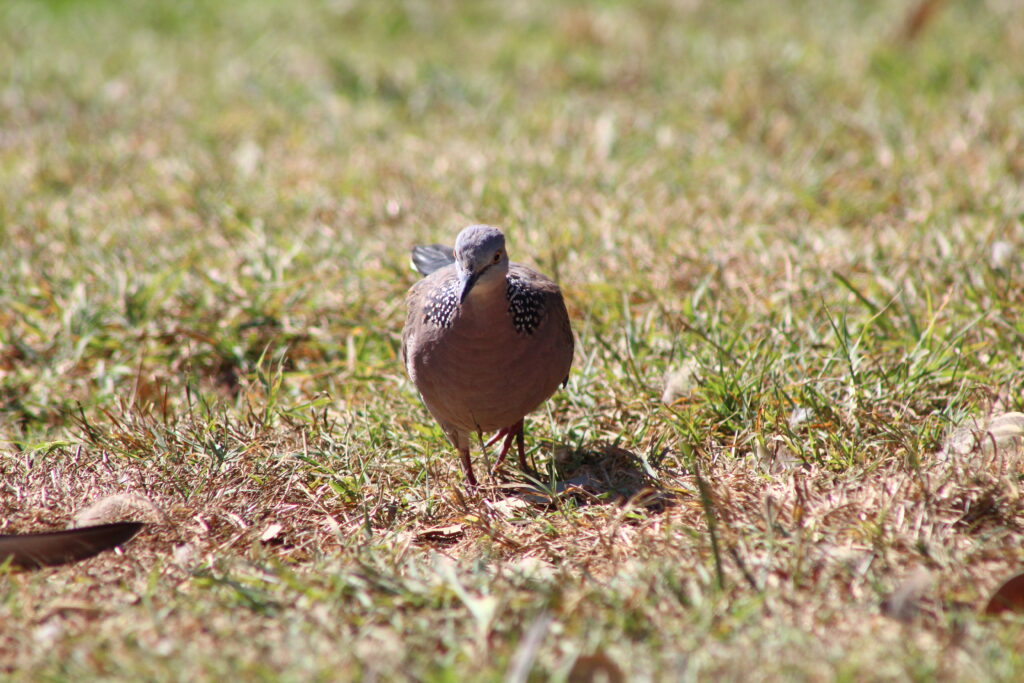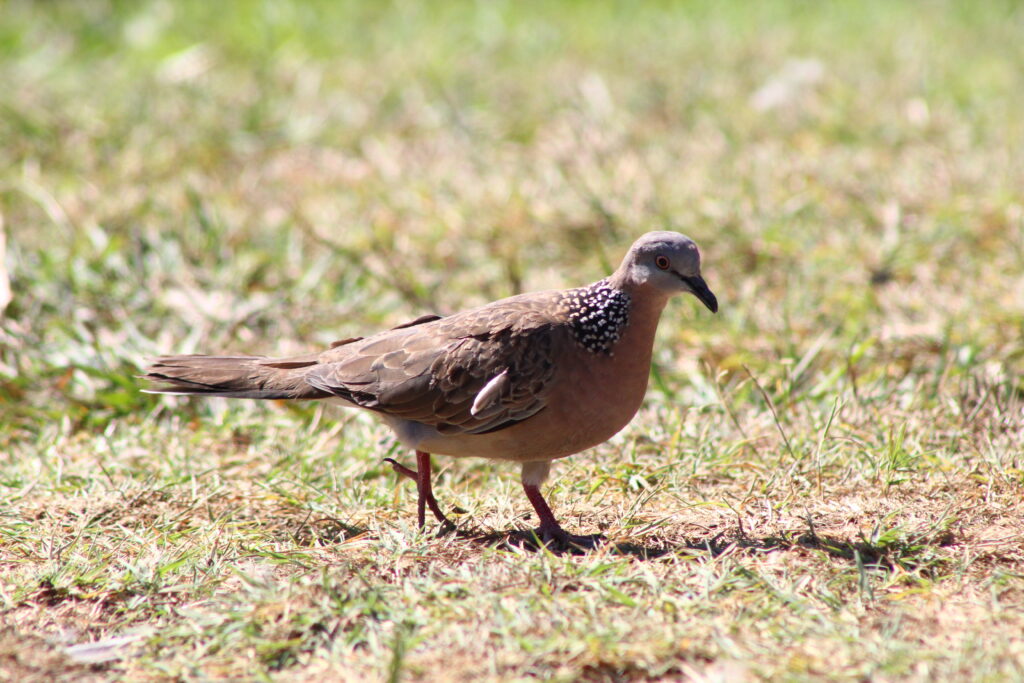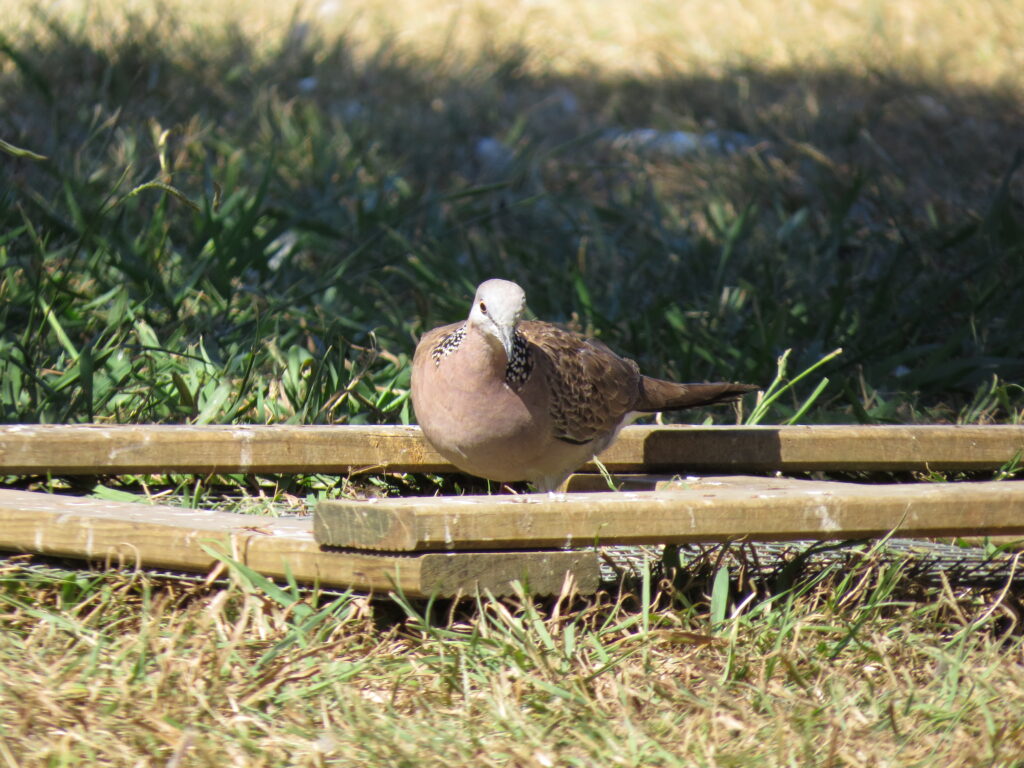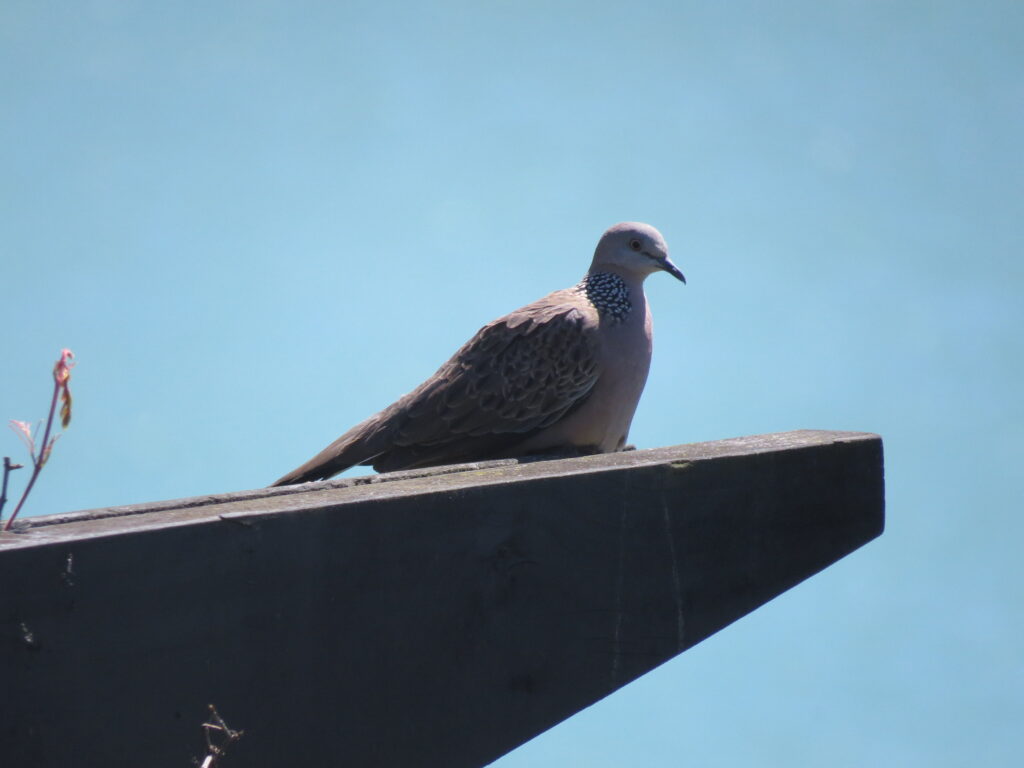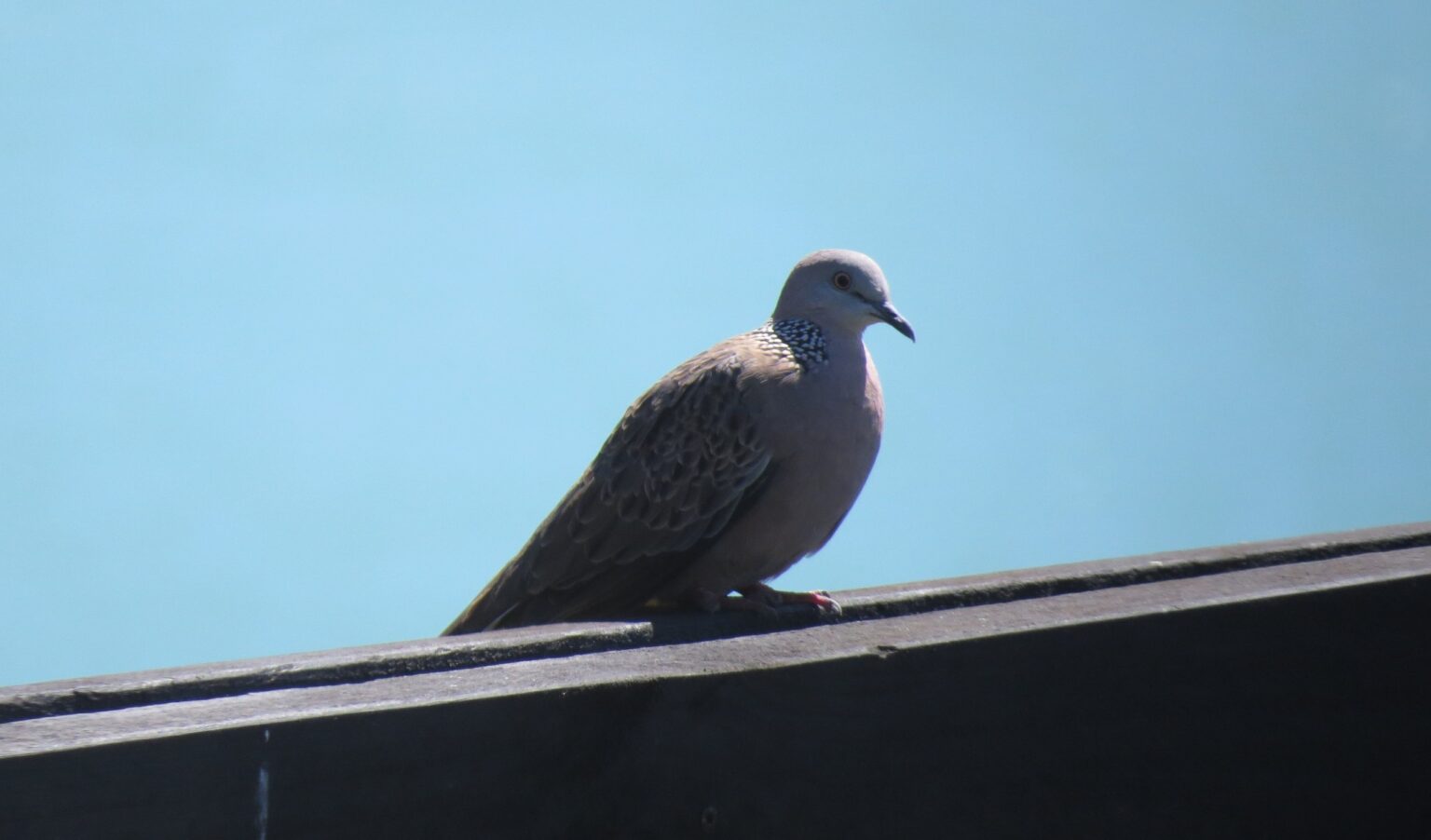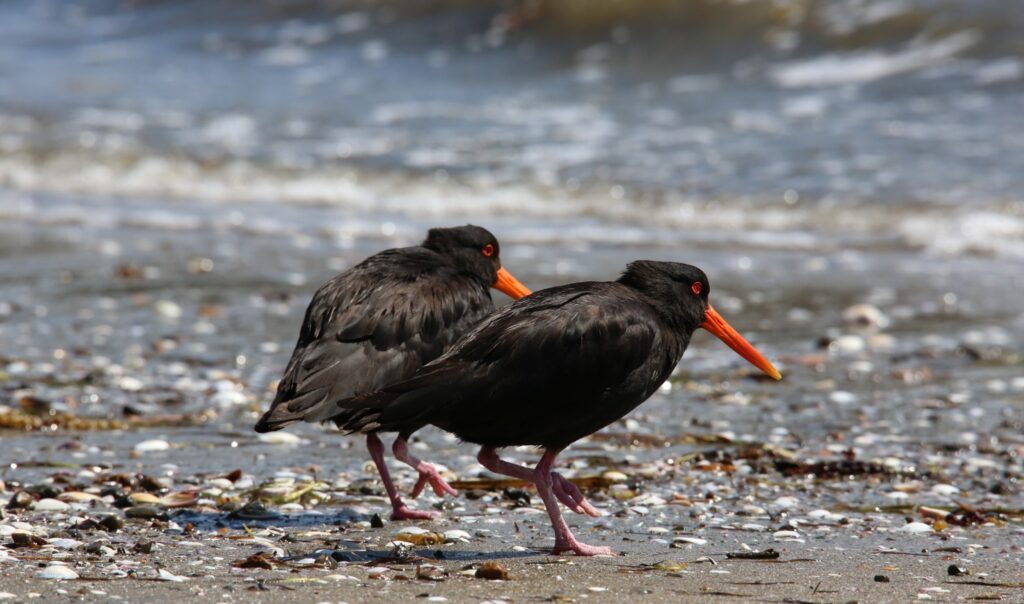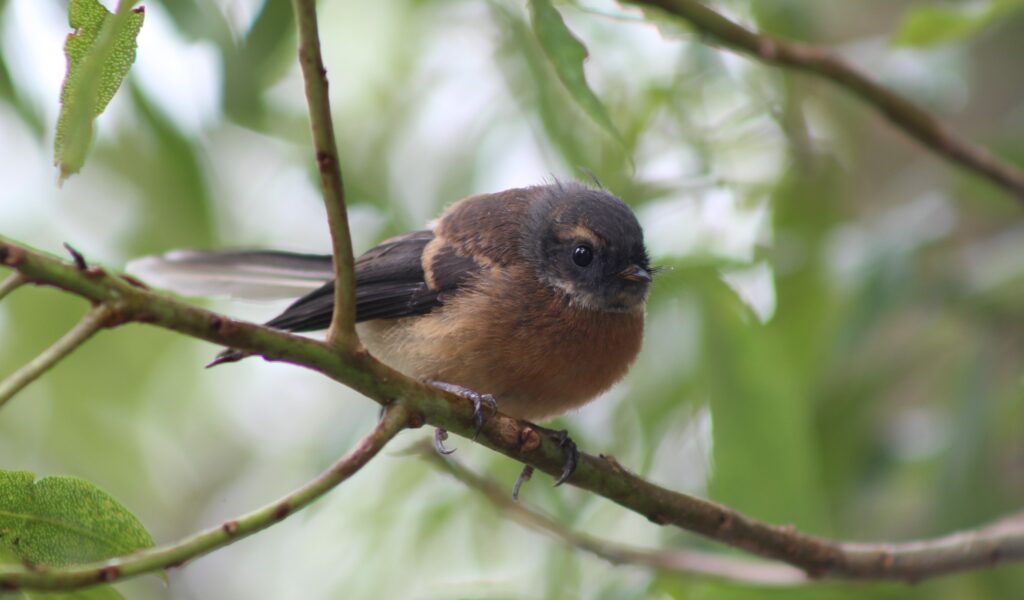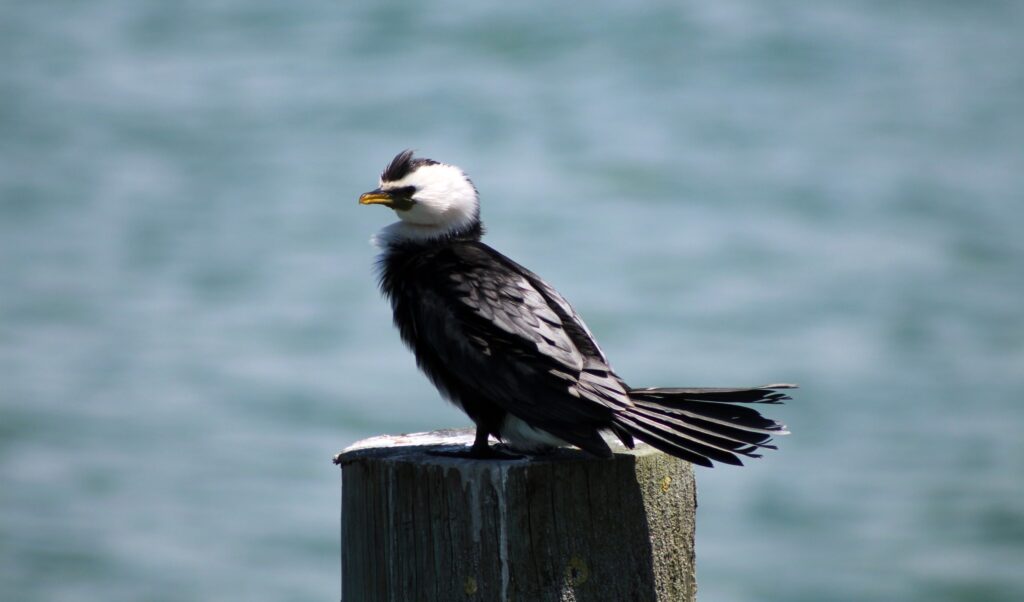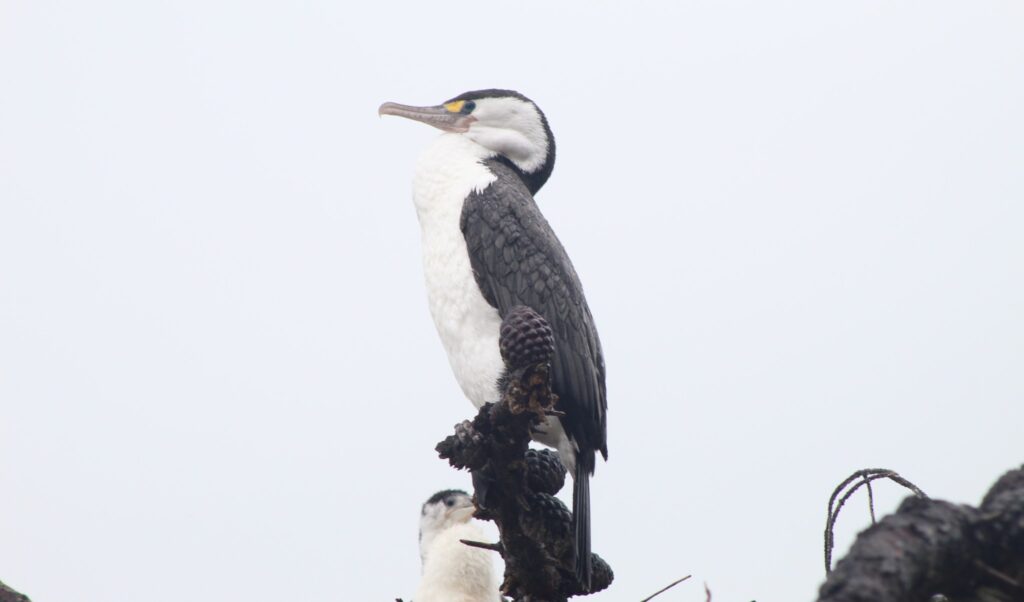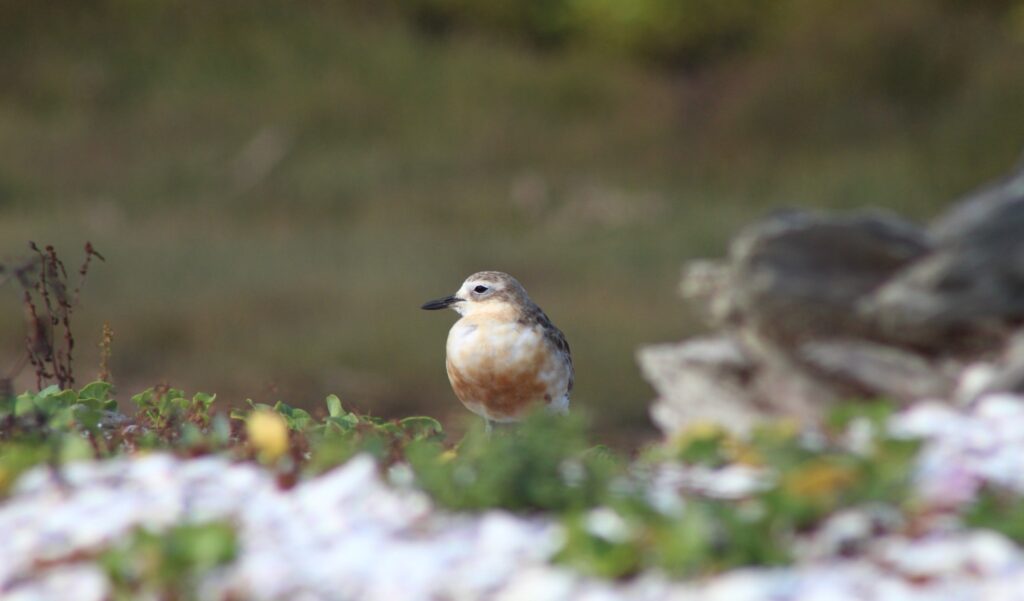Order) Columbiformes
Family) Columbidae
Species) Introduced
Length) 32 cm
Weight) 160 g
Other Names) Malay spotted dove, spotted dove, Chinese dove, pearl-necked dove, laceneck dove
Threats) cats, rats, stoats
Identification
The spotted dove is a medium-sized, long-tailed dove, with a greyish head, pink-grey underparts and speckled greyish brown upperparts. Located on Waiheke around gardens and rooster reserve.
Its distinguishing feature is a large white-spotted black half-collar around the back and sides of the neck and the legs are deep pink, and the iris red. The sexes are alike, although females are smaller with a less strikingly marked neck patch. Juveniles lack the prominent domino neck patch; their wing coverts and scapulars have pale brown edges; and the iris is brown-yellow.
Their call is a deep, slightly lilting coo corrr cuk, the inflection of each syllable rising slightly then falling. This 3-second phrase is repeated over and again, for minutes at a time.
Spotted doves occur mainly in urban parks and gardens. In its native range, the species occurs in moist open forests, woodland, cultivated areas, and around human settlement.
Spotted doves occur mostly in pairs or small flocks, foraging on the ground and perching in trees or on overhead telephone wires.
Their flight is rapid, powerful and direct, but birds leaving a perch to forage on the ground often glide down quietly. Males have an aerial advertising display in which they fly steeply and noisily up to 20-30 m before turning and gliding on stiffly spread wings and tail down to their perch.
Courting males perform an exaggerated bow, first raising themselves up, filling their air sacs, then bowing down, expelling the air while calling loudly cu-coo coorrr. At other times, a bird will sit and call cuk cuk coorrr from a perch, this call being softer and less insistent than that given during the bow-coo display. Both sexes give this perch-coo call, but the female’s call is quieter. Mated birds preen each other (allopreening), especially around the head and neck. Aggressive behaviour normally includes a threatening kirr call, but this can escalate into physical confrontation involving wing slapping.
Breeding
Spotted doves breed primarily in spring and summer August-February, but can breed at other times of the year if there is sufficient food and mild weather.
The nest is a shallow platform of twigs, usually placed above 3 m in a tree or bush, or even in structures.
The 2 white eggs are incubated by both sexes.
Nestlings are semi-altricial, covered at first with wispy down and brooded and fed by both parents, initially with a secretion called ‘crop milk’. Once the feathers begin to develop, the chicks are brooded less, and are fed regurgitated seed. More than one brood can be raised in a season.
Food
Spotted Doves forage on the ground in grassland, cultivated areas and around homesteads, feeding on the seeds of grasses, cereals, small herbs and fallen seeds.
Birds will occasionally reach up and strip seeds from growing plants.
Waiheke Locations
Powerlines and Trees– Perching on tree branches and powerlines around waiheke.
Rooster Reserve – Spotted many times associating with other birds getting grain.
Spotted dove are flying birds so they can really be anywhere on Waiheke but not just Waiheke they are all over New Zealand, these are just areas I’ve spotted them and photographed.
Gallery
